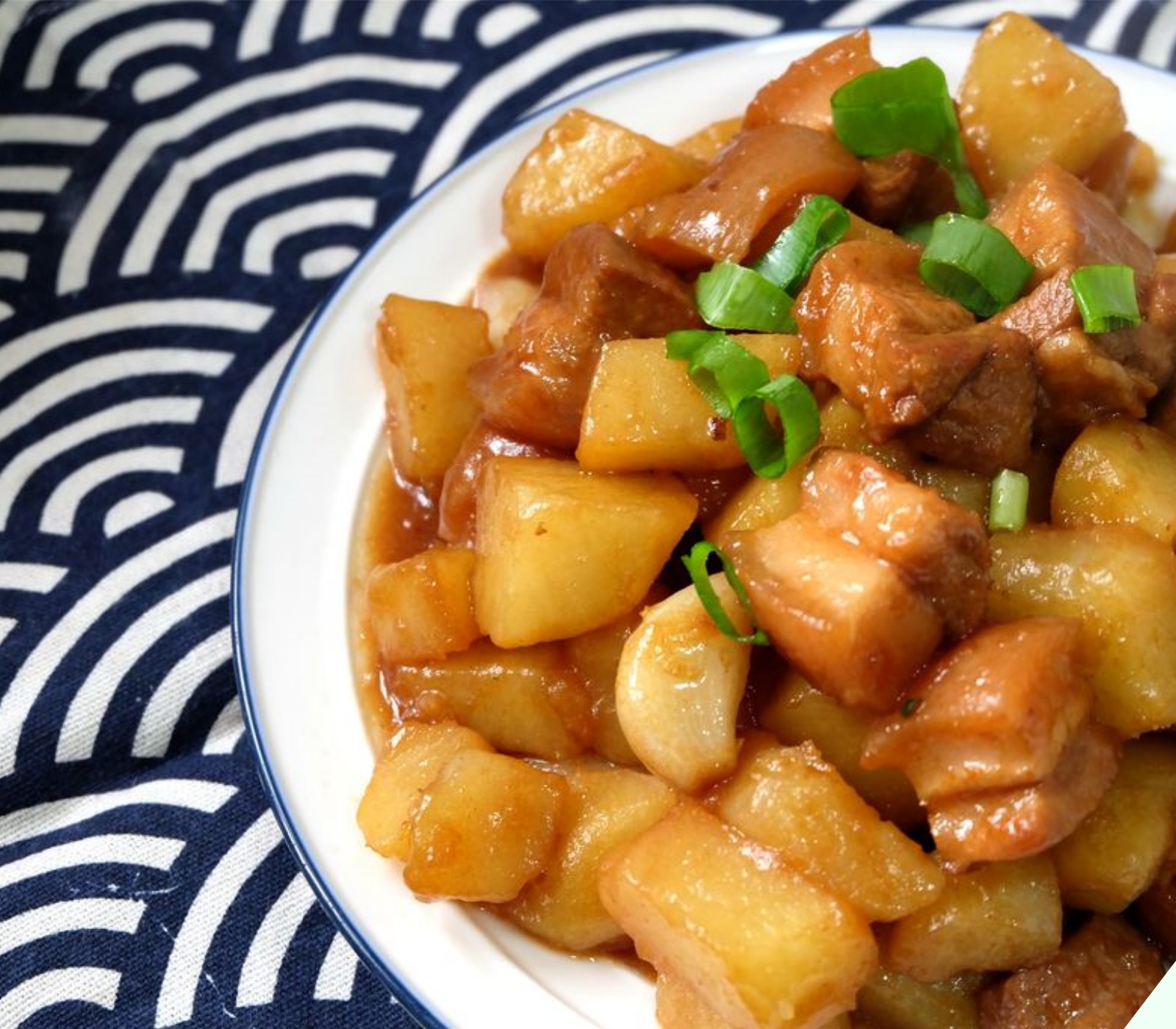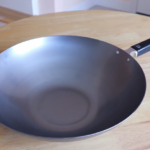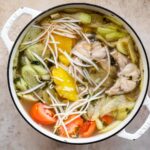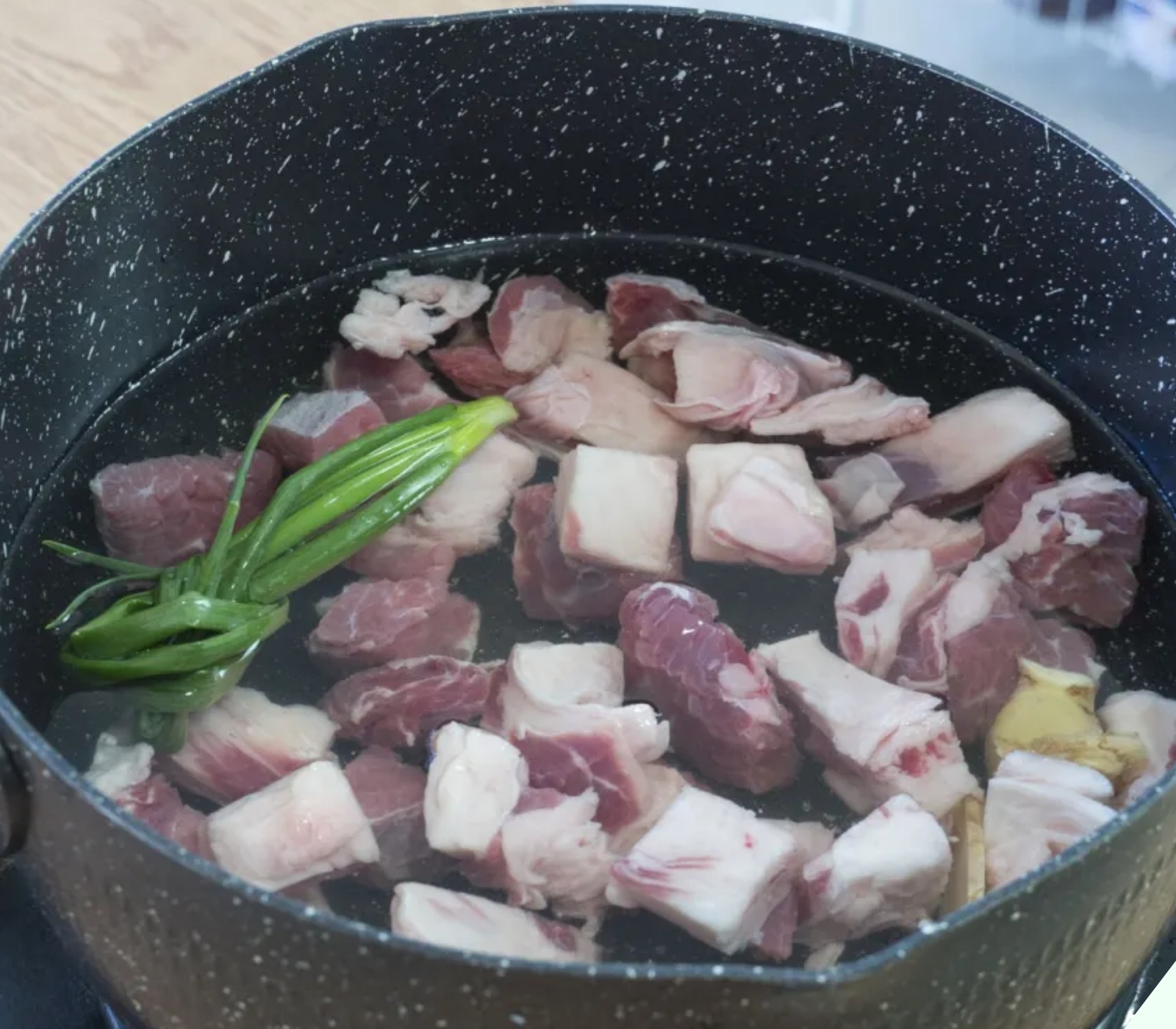
This step will help remove any remaining impurities and excess blood, making the meat cleaner and less fishy. Blanching meat may seem simple, but it’s actually quite tricky.
So, should you blanch pork in cold or hot water? Getting this step wrong can result in meat that still has an unpleasant odor, a fishy taste, and becomes tough and dry when cooked.
Should You Blanch Pork in Cold or Hot Water?
According to chefs, the correct way is to blanch pork in cold water. If you use hot water, the surface of the pork will quickly contract when exposed to high temperatures.
As a result, the excess blood in the pork won’t be completely removed, leading to a fishy and foul odor. Therefore, it’s essential to use cold water when blanching pork. Gradually increasing the water temperature will cause the blood residue in the meat to seep out slowly, ensuring that the cooked pork is free from any unpleasant odors.
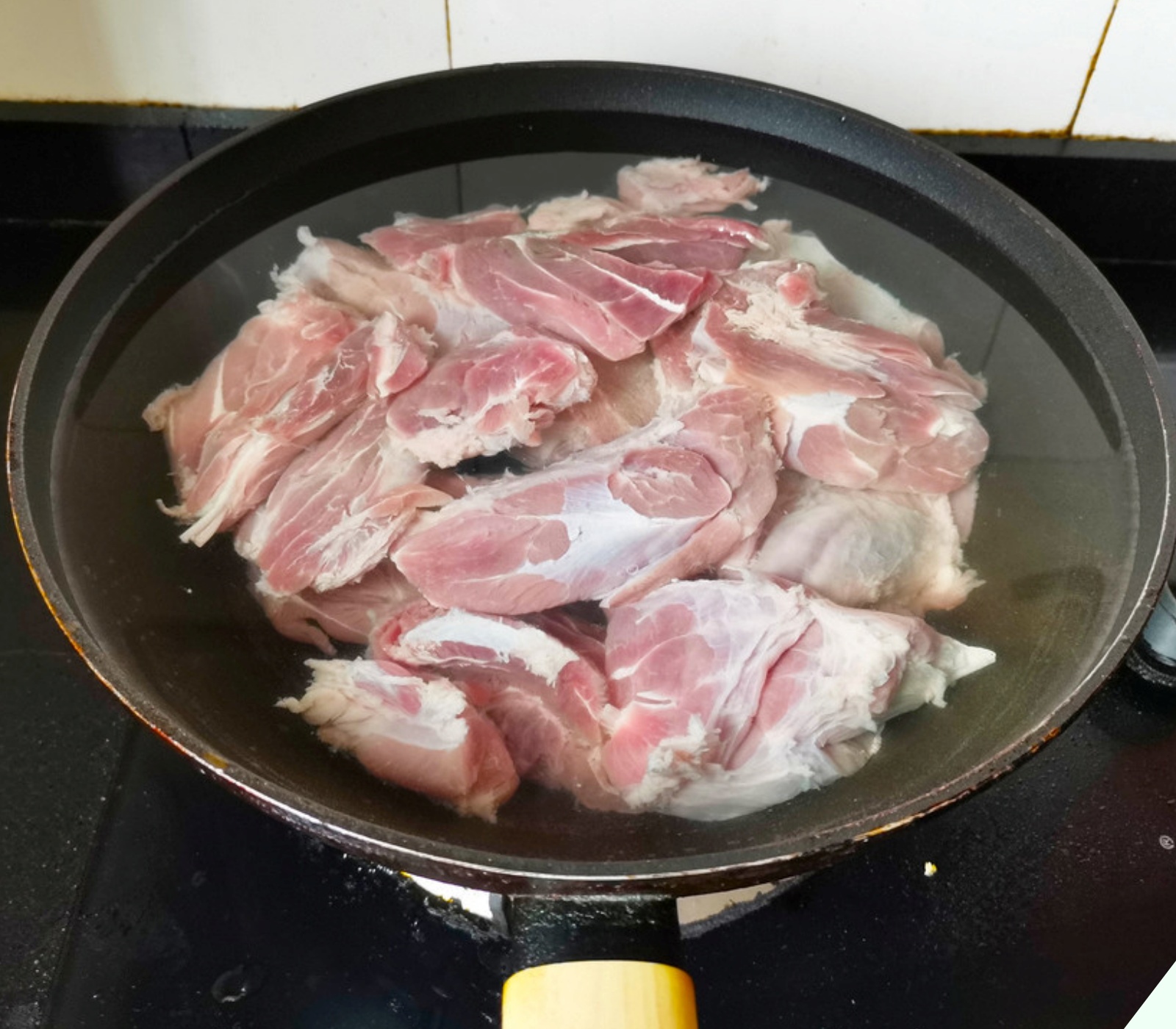
Here are some important tips to keep in mind when blanching pork:
– Before blanching, soak the meat in water for about 3 hours. This step is crucial as it helps remove some of the excess blood, making the meat smell better.
– During the blanching process, once the water starts boiling, adjust the heat to low. This will help save gas/electricity while preventing blood residue from remaining in the meat.
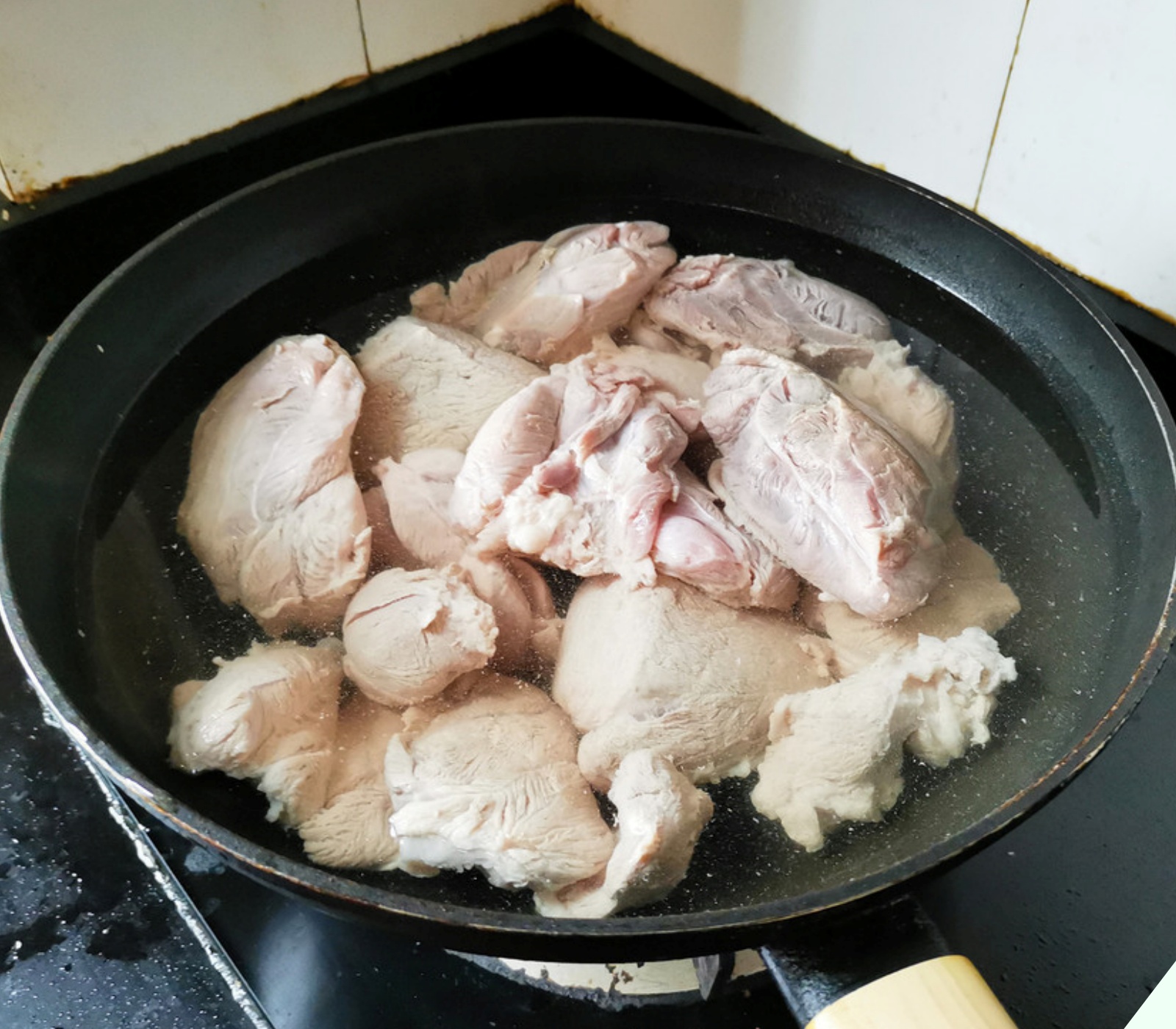
Easy Guide to Blanching Pork at Home
Ingredients
– 1kg pork belly
– 10ml cooking wine
– Water
– Fresh ginger
Blanching Steps
Step 1:
Rinse the pork belly and soak it in a bowl of cold water for 3 hours. Change the water once or twice during this time to help remove excess blood and reduce any fishy smell.
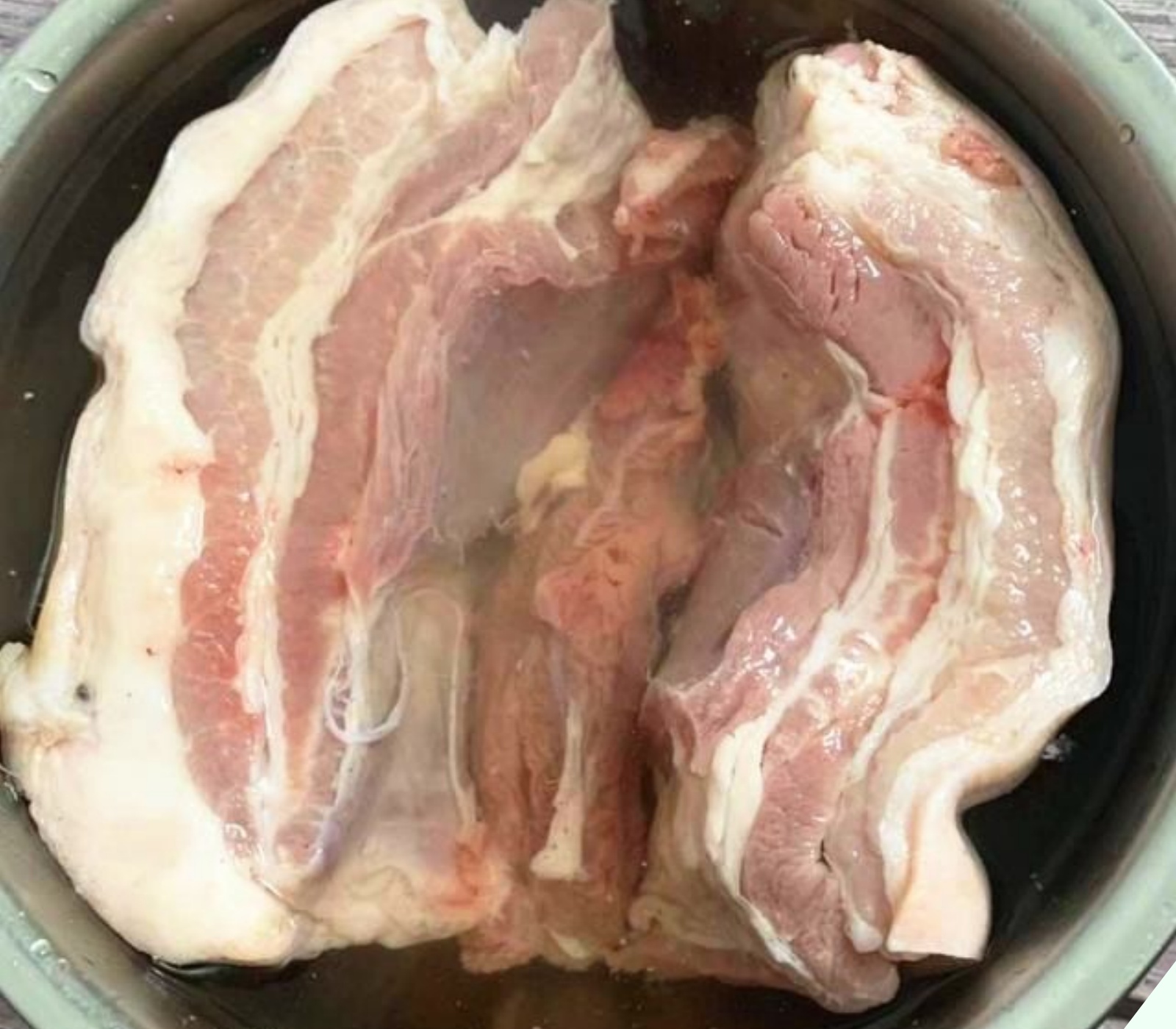
Step 2:
Rinse the pork again and place it in a pot. Add fresh ginger, cooking wine, and enough water to just cover the meat.
Turn on the heat to high and bring the water to a boil. Once it’s boiling, reduce the heat to low and simmer for about 5 minutes.
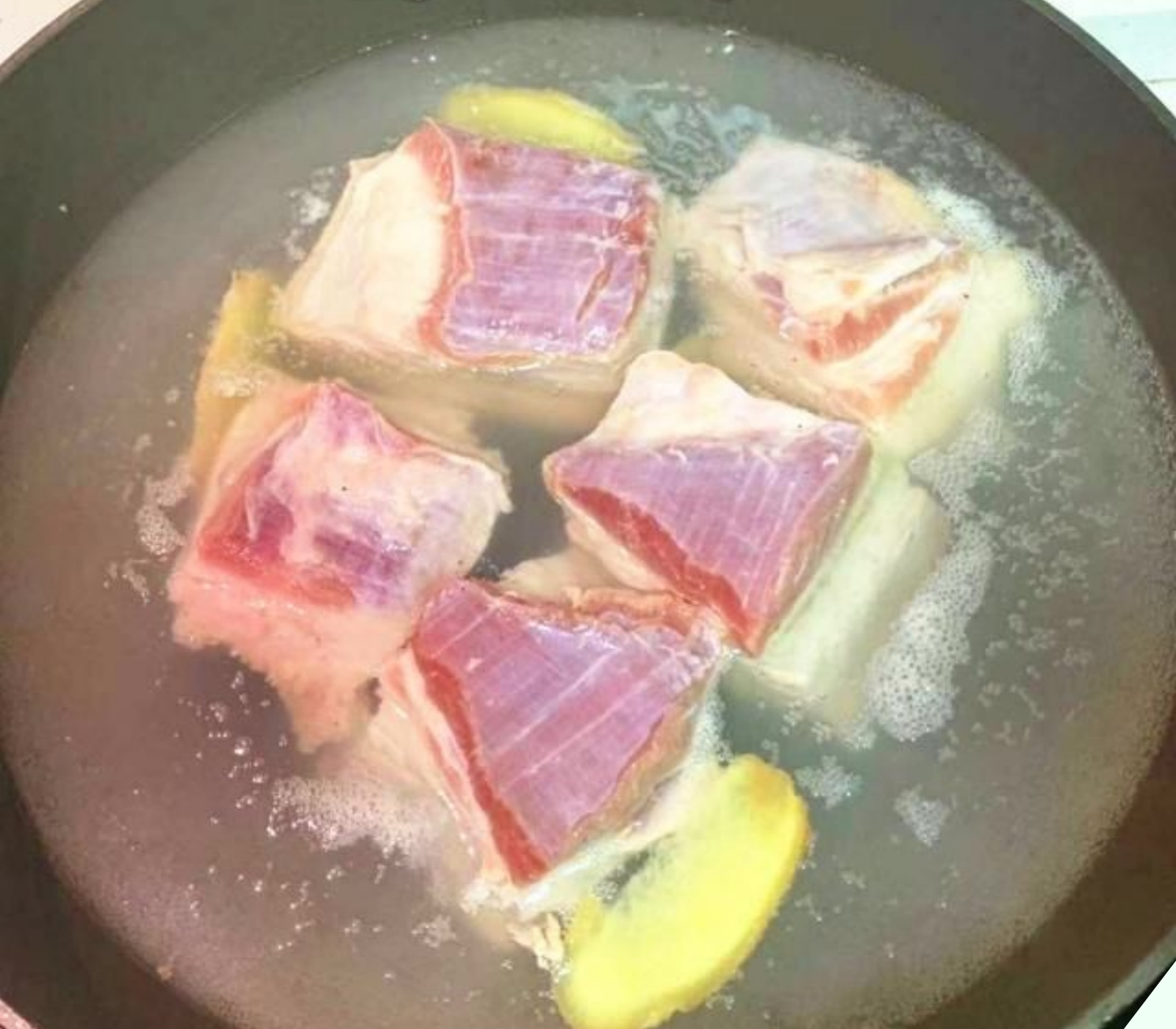
Step 3:
Remove the pork from the pot and immediately place it in a bowl of cold water. Soak the pork for 3 minutes, then proceed to cook it as desired—for example, by stir-frying, braising, or frying/deep-frying. If you’re not using it immediately, you can store it in a ziplock bag in the freezer.
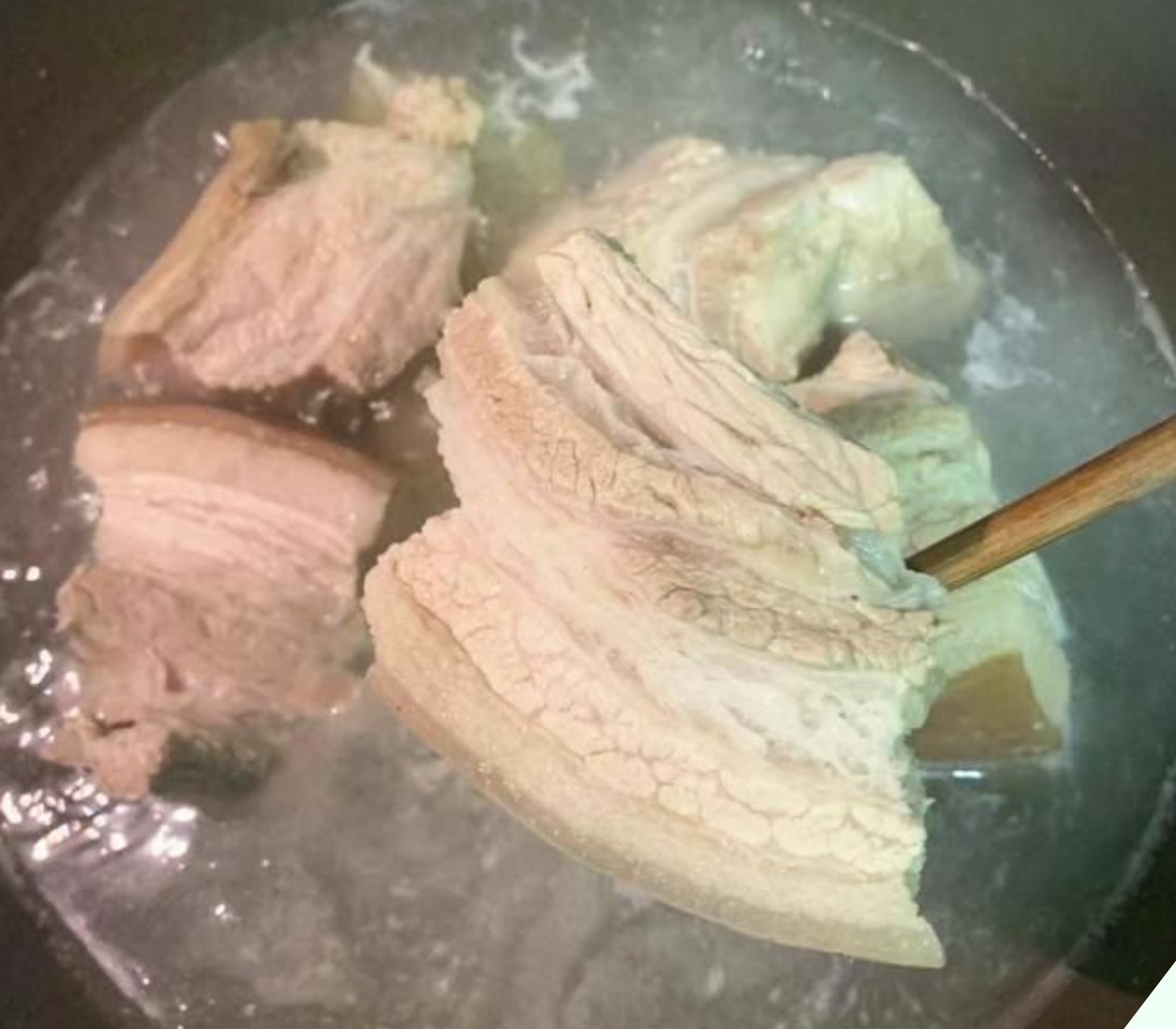
Check out the delicious pork recipe below if you’re looking for something different from the usual boiled or stir-fried dishes.
Pork and Potato Stew
Ingredients:
– 700g pork belly
– 1 tablespoon soy sauce
– 1 tablespoon oil
– Onion
– 2 potatoes
– Salt
– Garlic
– Sugar
How to Make Pork and Potato Stew
Step 1: Prepare the Pork
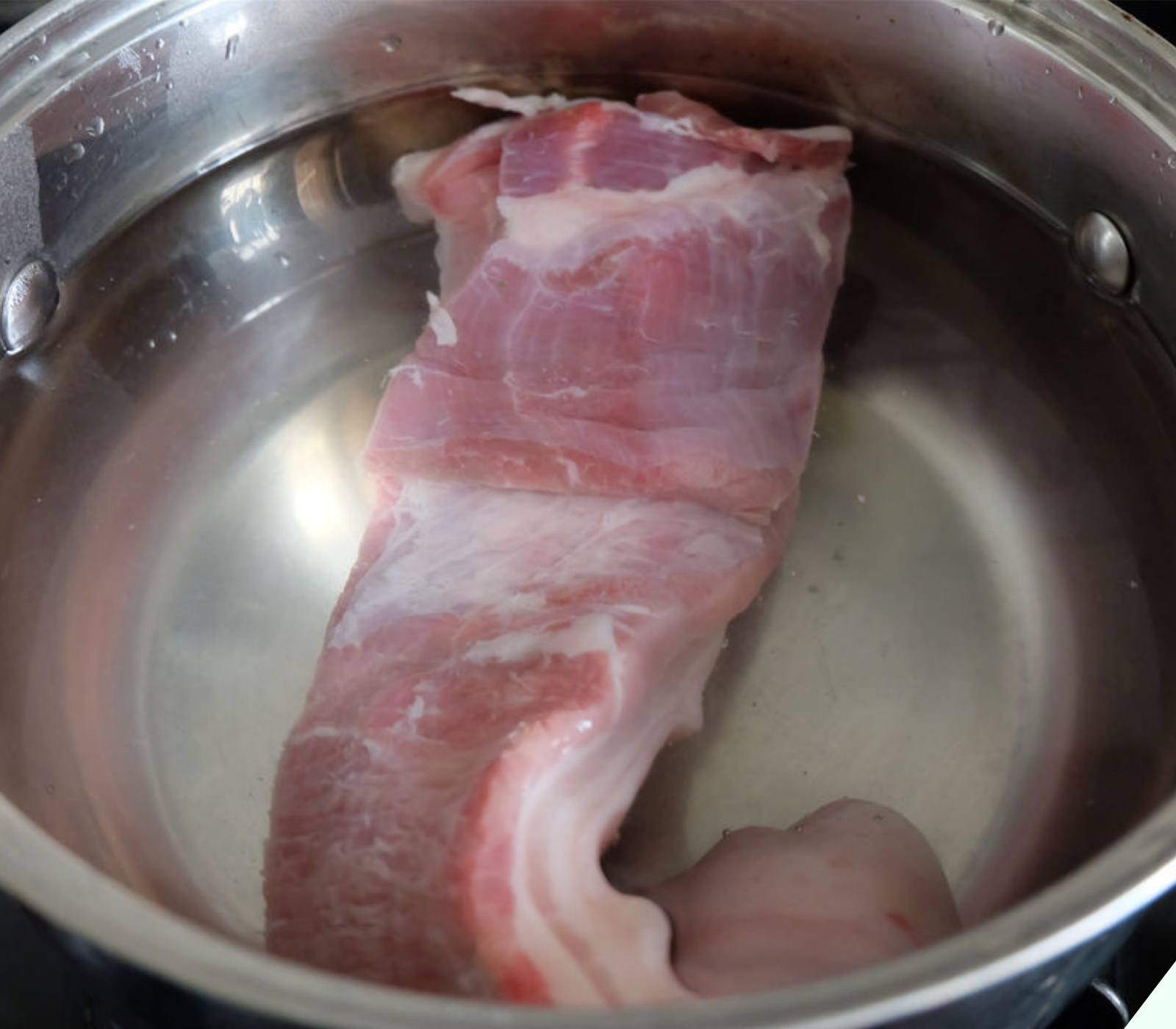
– Rinse the pork belly and soak it in a dilute salt water solution for about 1 to 3 hours, then proceed to blanch it.
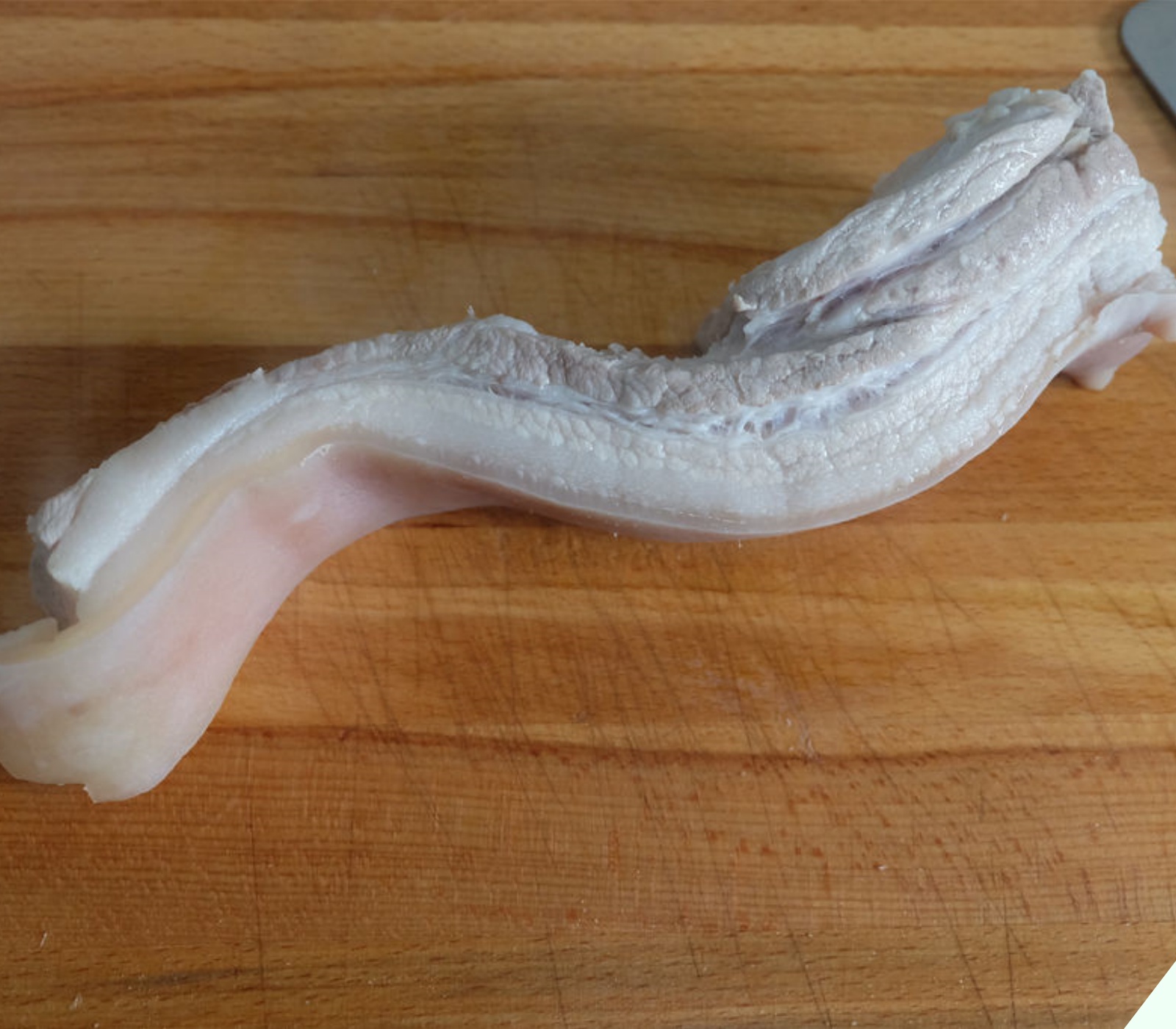
– Place the pork in a pot, add cold water and a few slices of ginger, and bring to a boil. Once the pork has been boiling for about 3 minutes, remove it from the heat.
Step 2: Cut the Pork and Potatoes
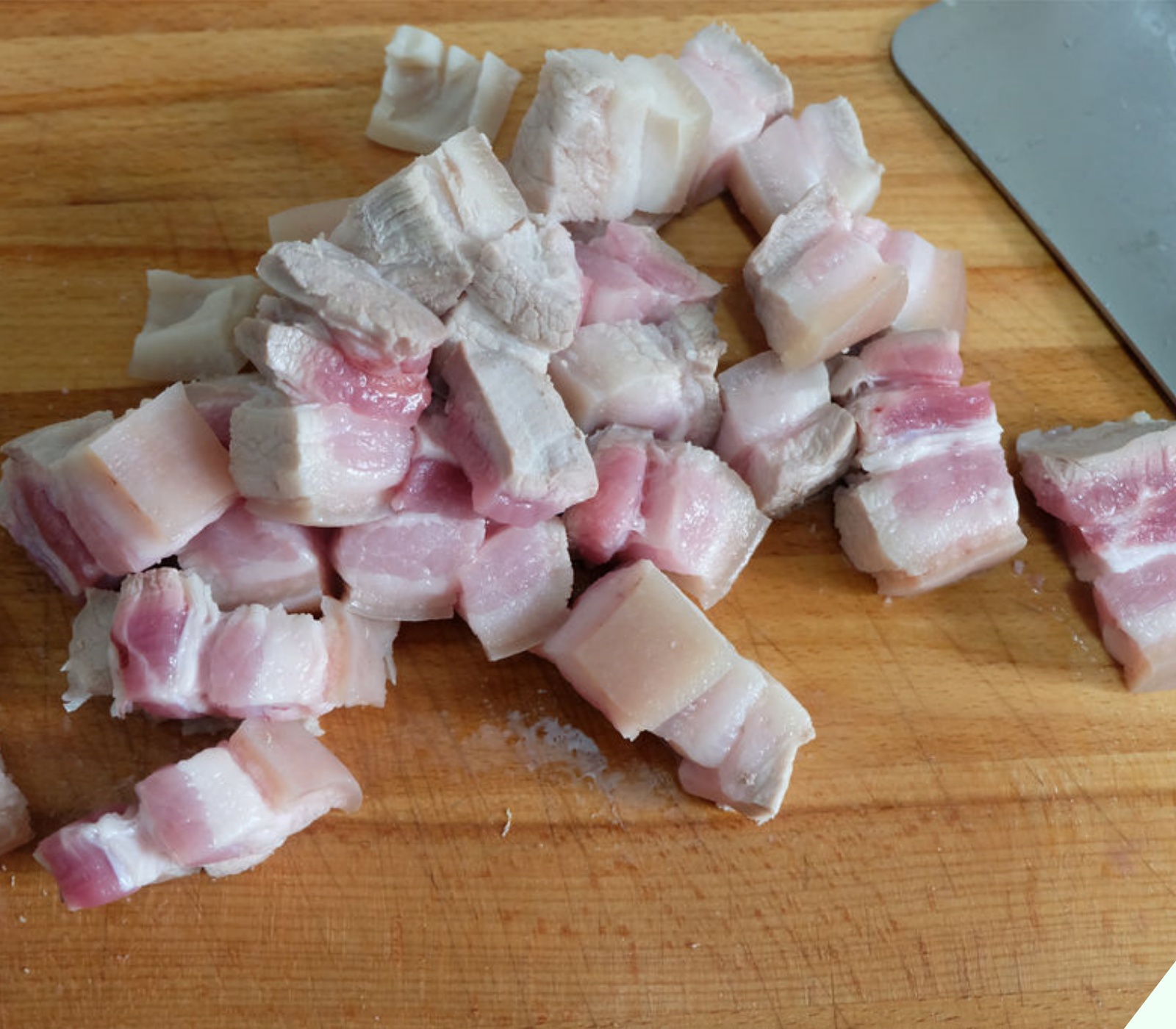
– Cut the pork into bite-sized pieces. You can cut it into cubes or thin slices, depending on your preference.
– Peel and cut the potatoes into bite-sized cubes.
Step 3: Stir-Fry the Pork
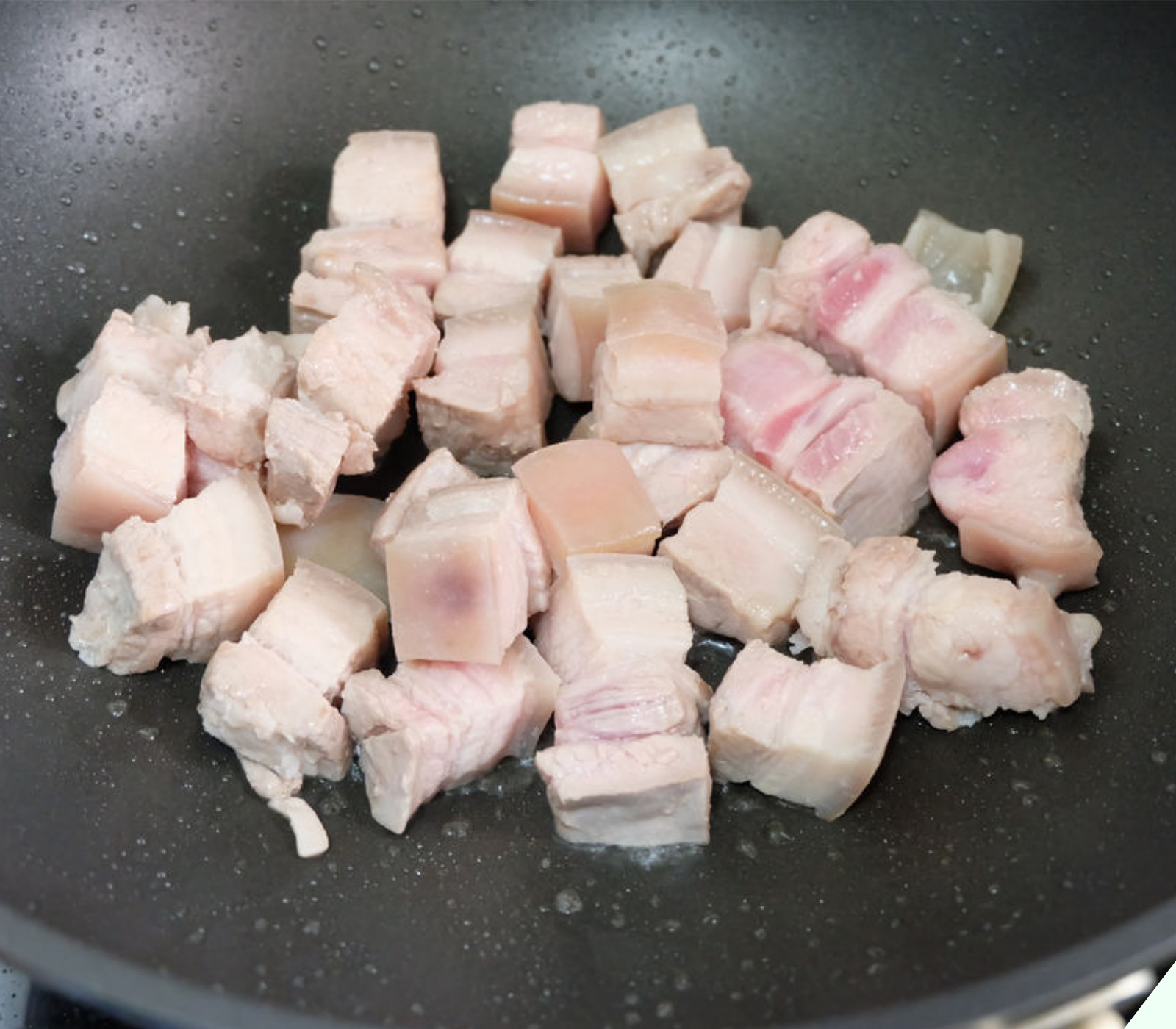
– Heat a pan over medium heat and add a little oil. Add the pork pieces and stir-fry until the fat is rendered. Note that the heat should be medium to low for this step.
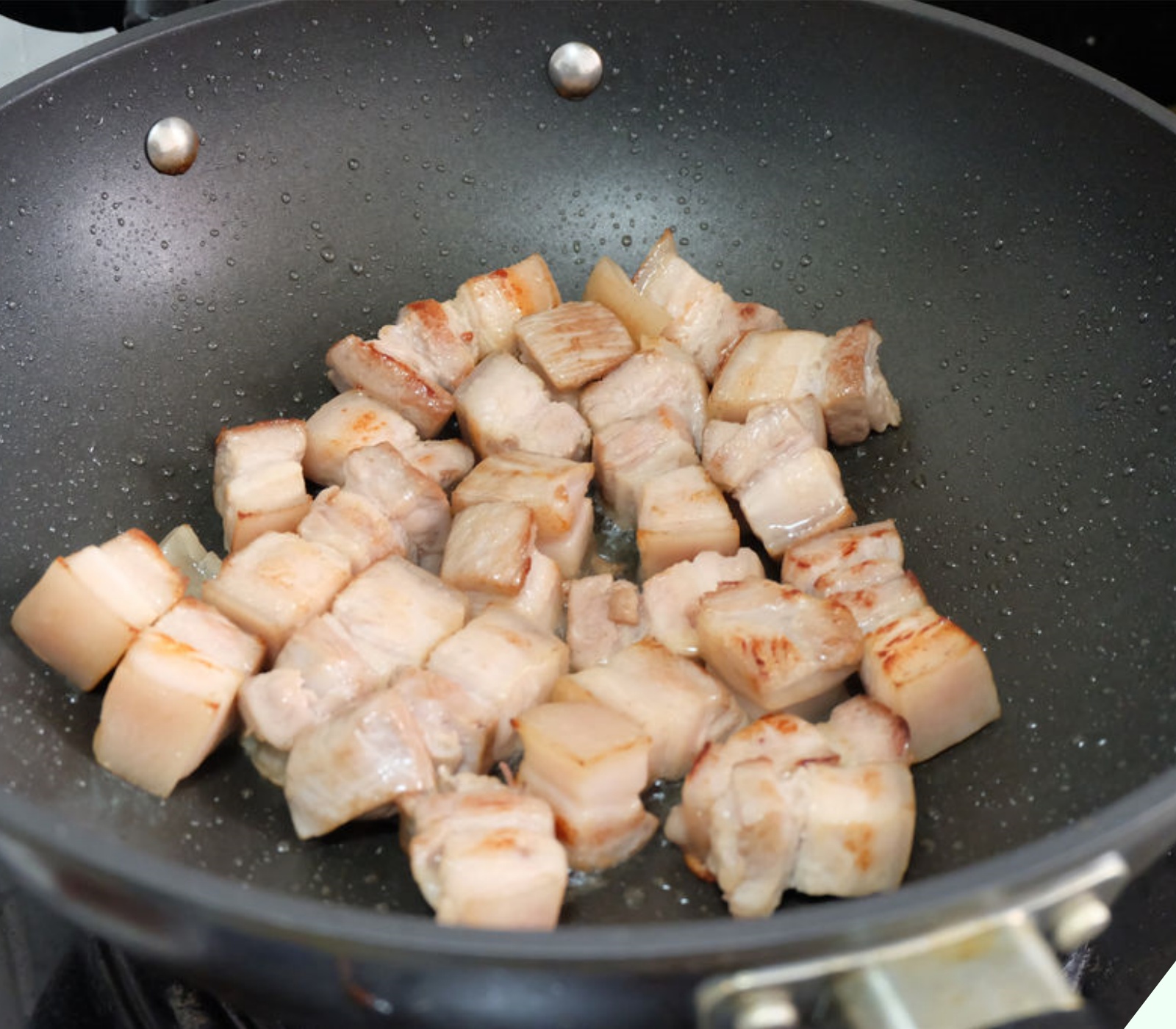
Step 4: Braise the Pork
– Add enough water to the pan to just cover the meat. Turn the heat up to high and bring it to a boil, then reduce the heat to low and simmer for about an hour.
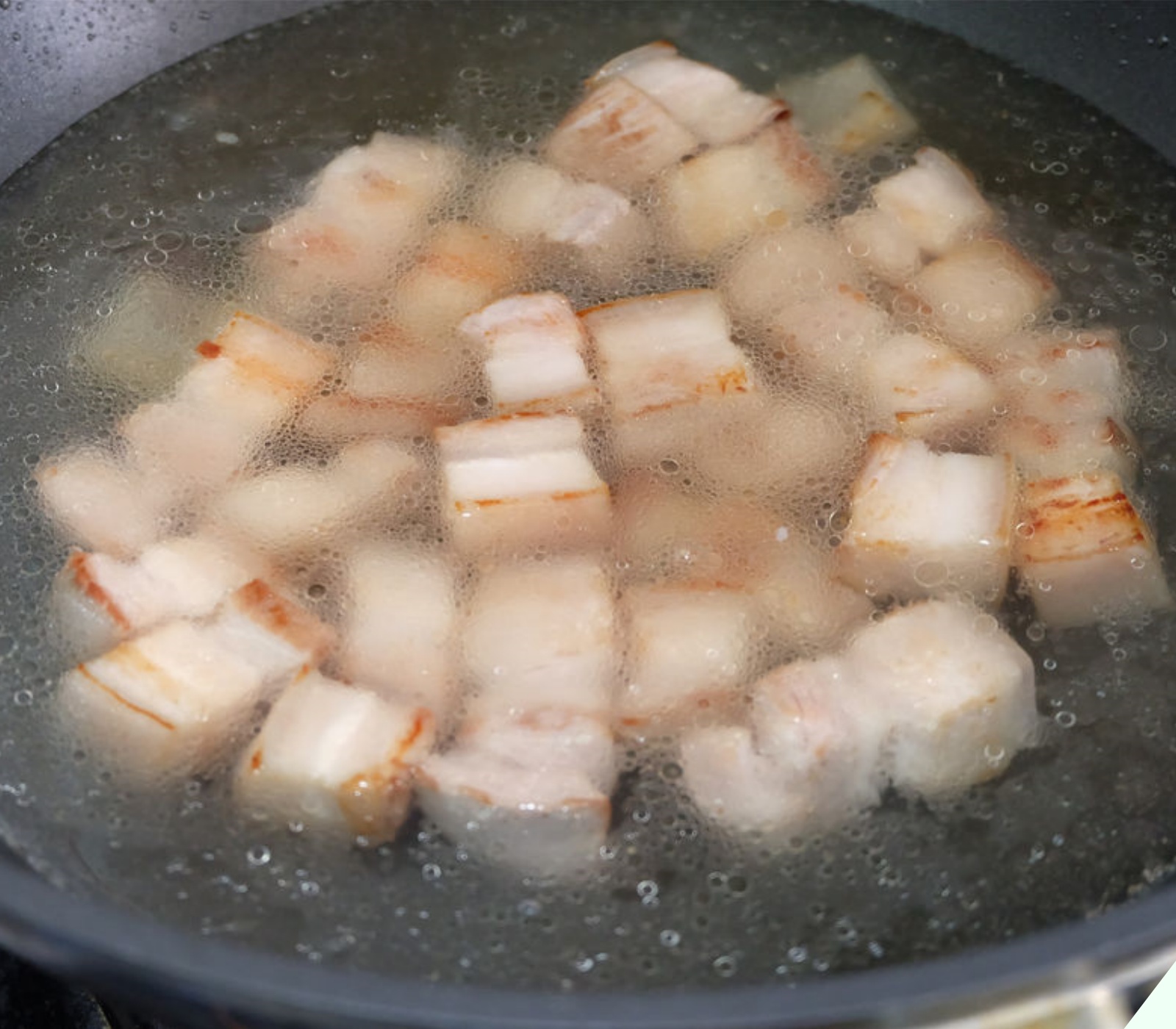
– Add a tablespoon of soy sauce to the pan to enhance the flavor of the meat.
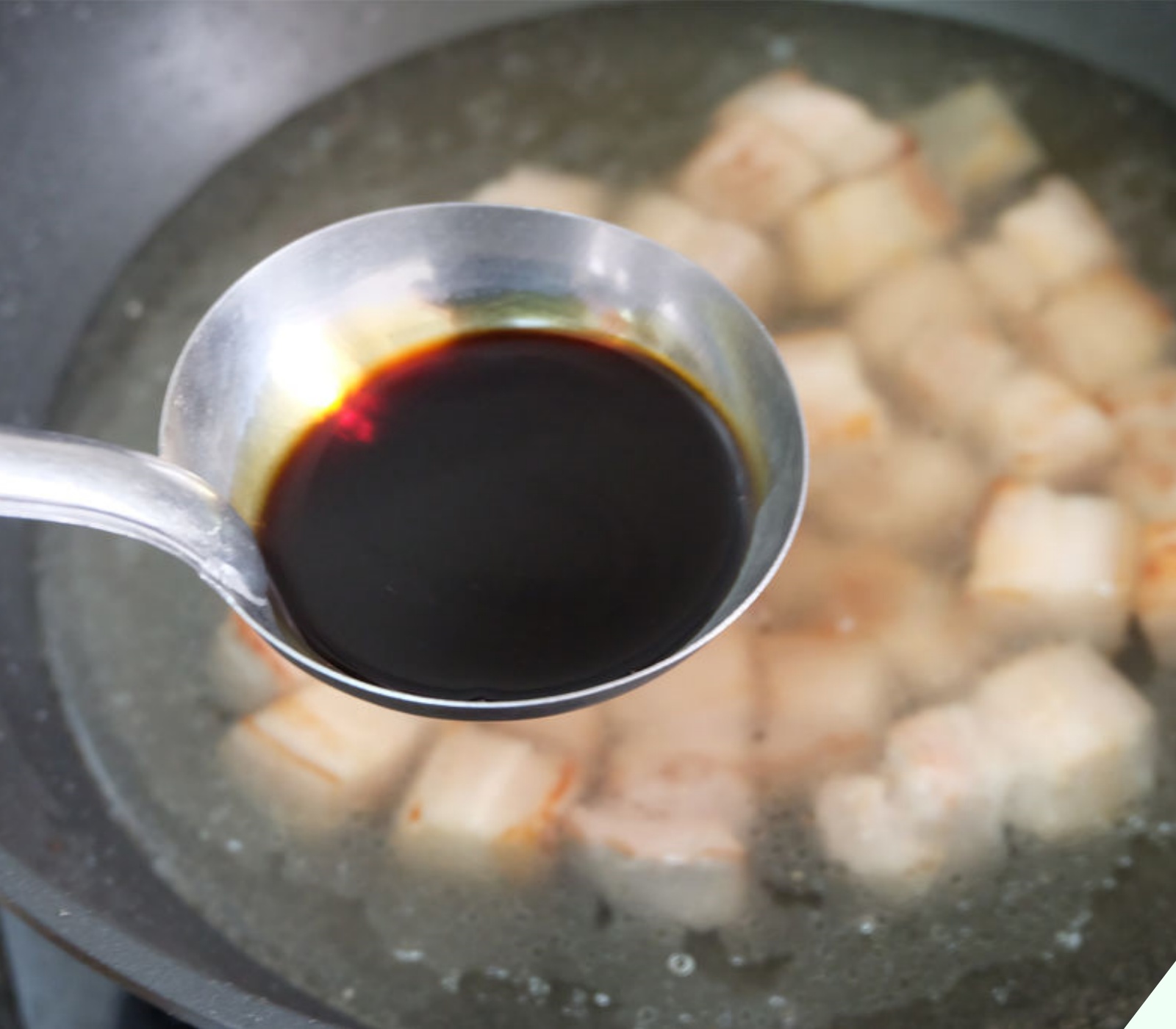
Step 5: Add the Potatoes
– When the pork is almost done, add the potatoes, a little chopped garlic, and salt to taste.
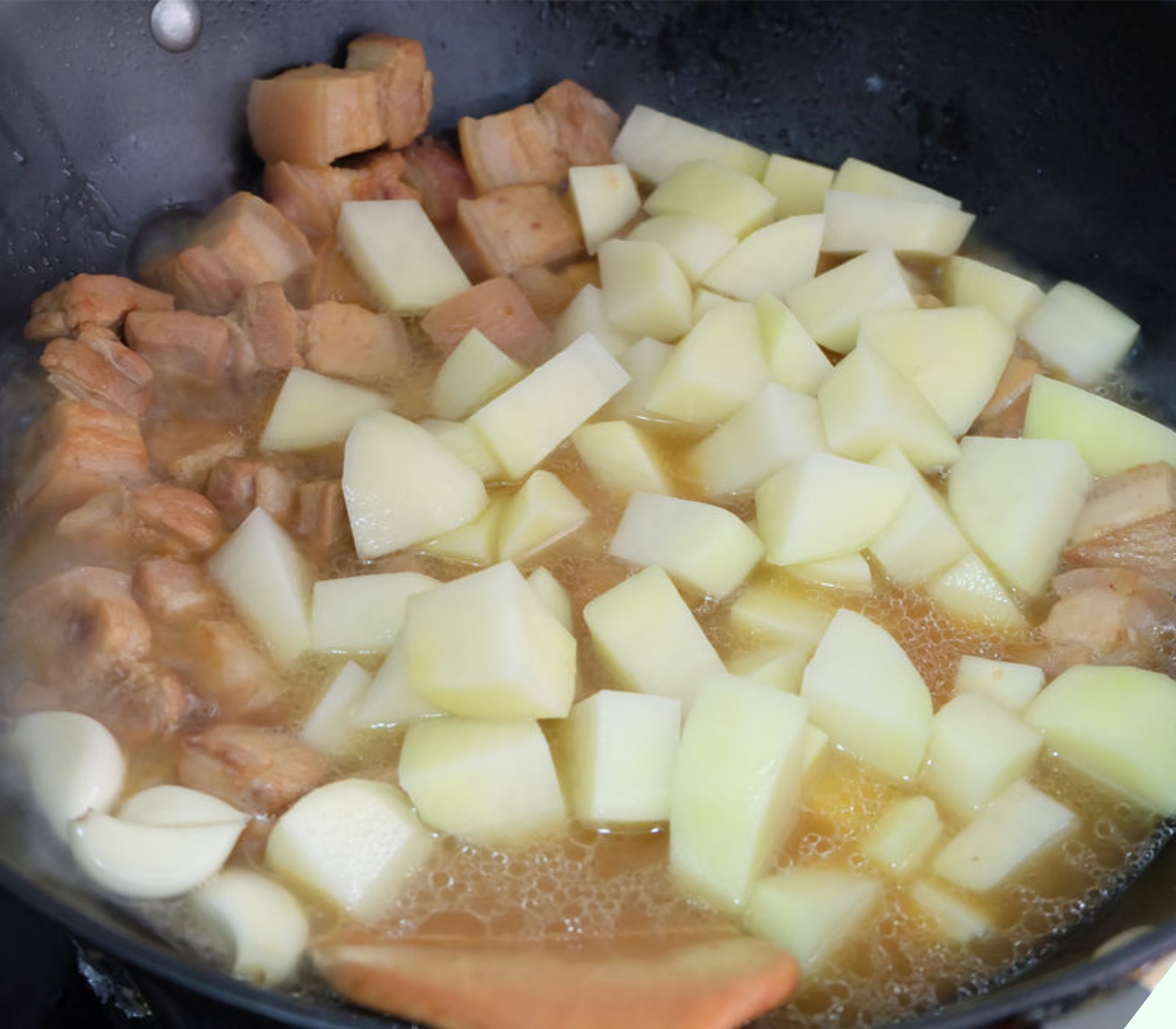
– As the potatoes near doneness, add two lumps of rock sugar. Regular sugar can be used as a substitute.
Step 6: Finish the Dish
– When most of the liquid has evaporated, taste and adjust the seasoning as needed, then turn off the heat.
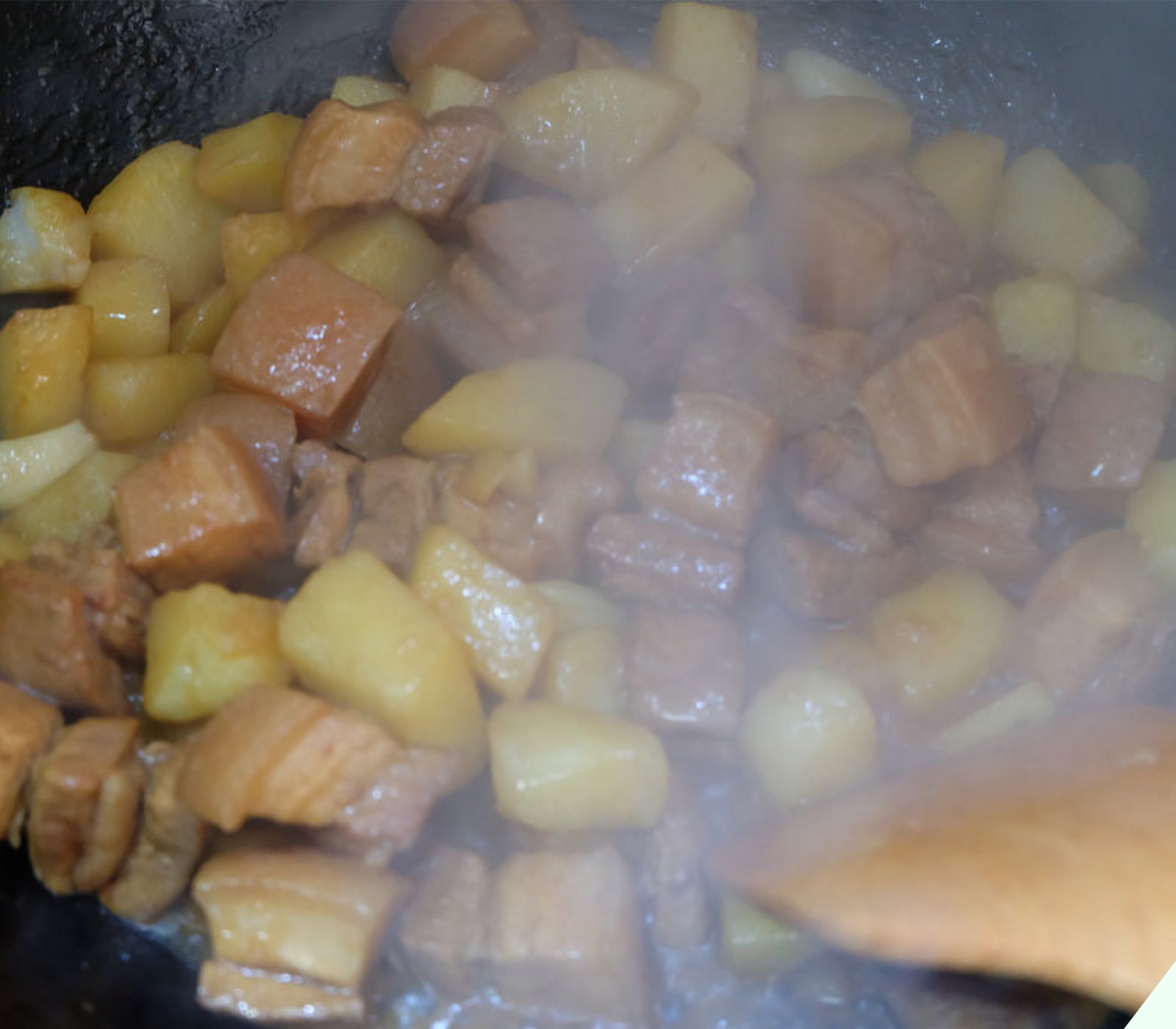
– Serve the pork and potatoes on a plate, garnished with chopped green onions.
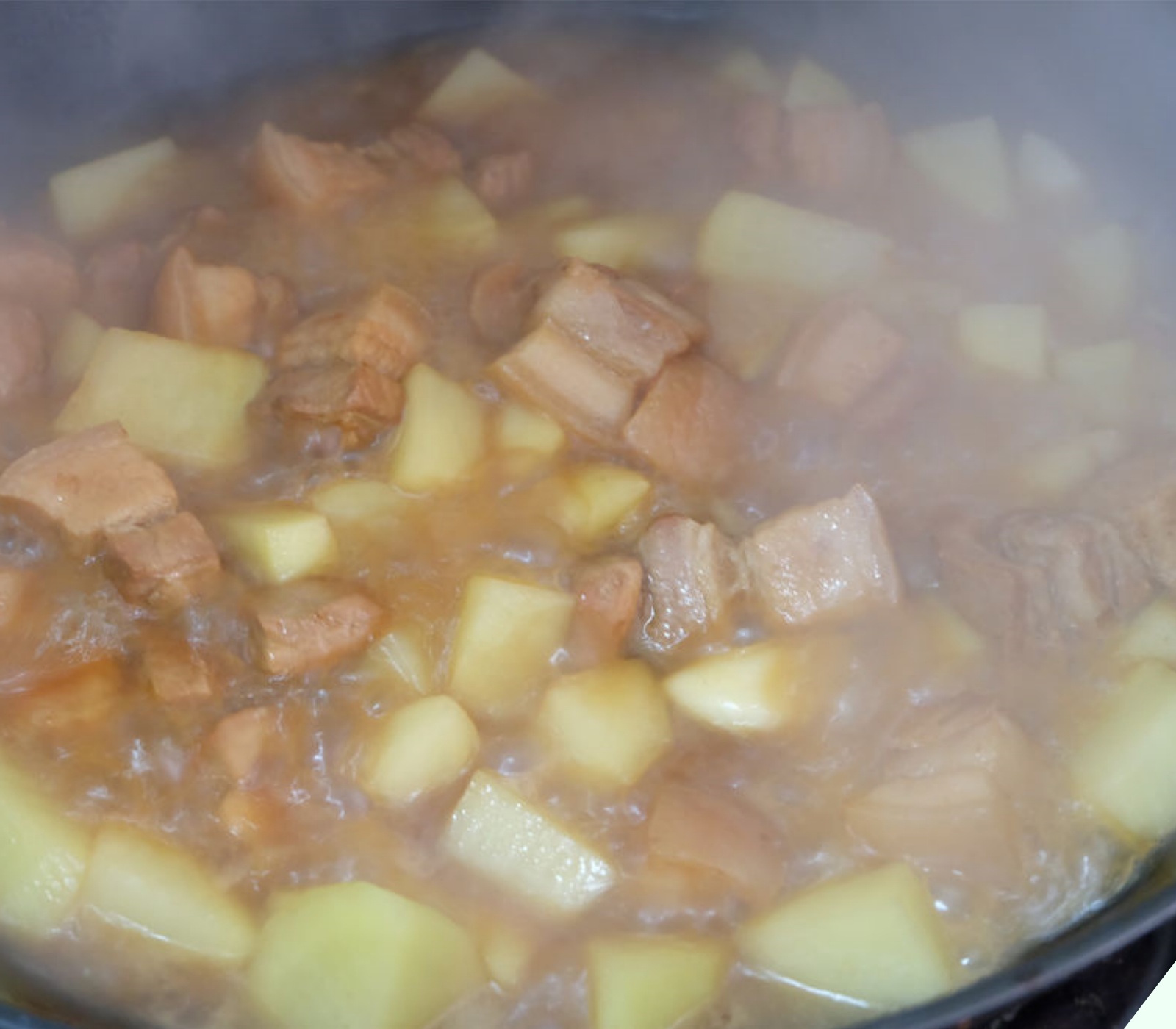
This pork stew is a delicious twist on a classic, with tender, flavorful pork and soft, fluffy potatoes. It’s a perfect dish to serve with rice.
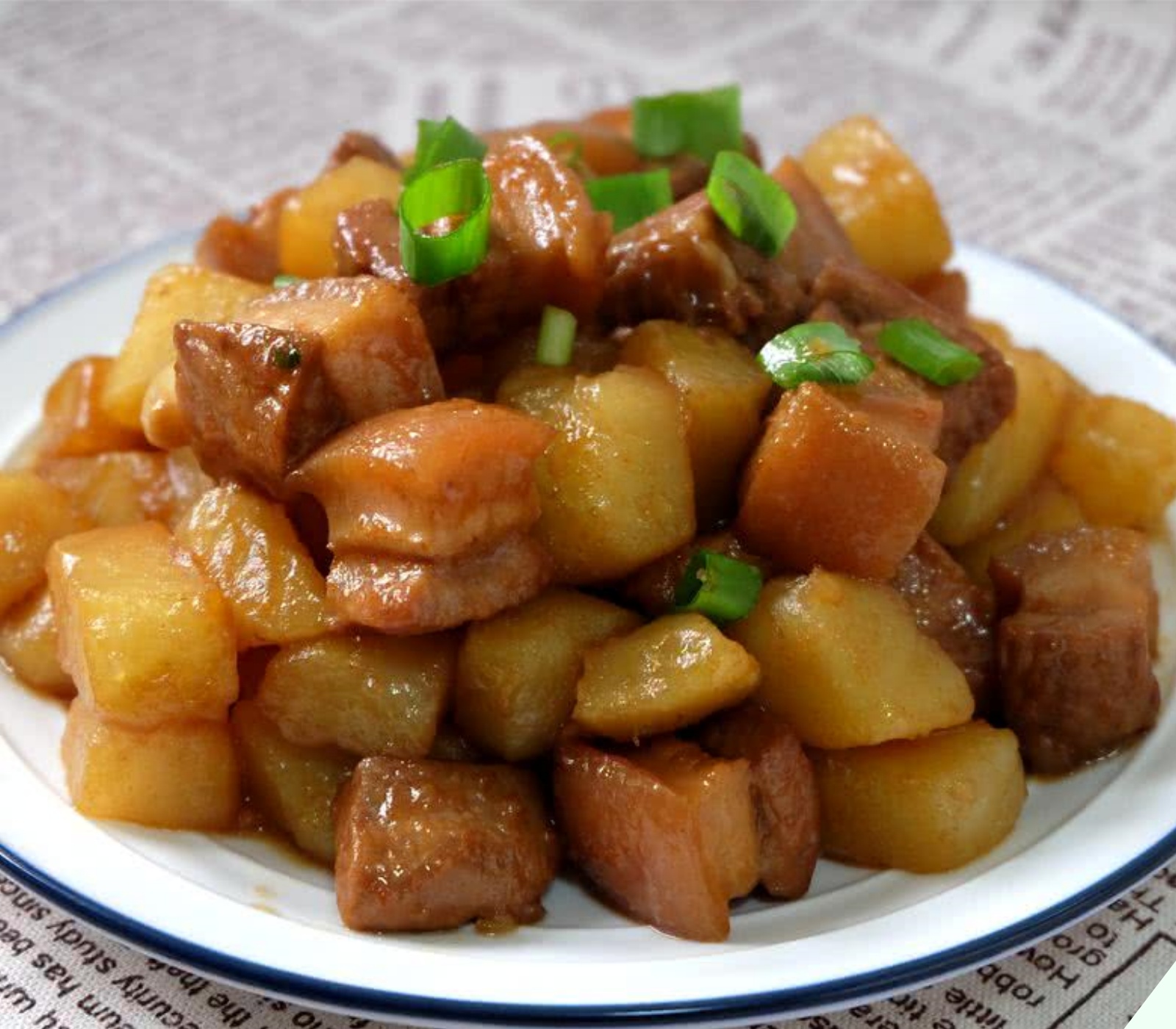
Both children and adults will love this dish.
